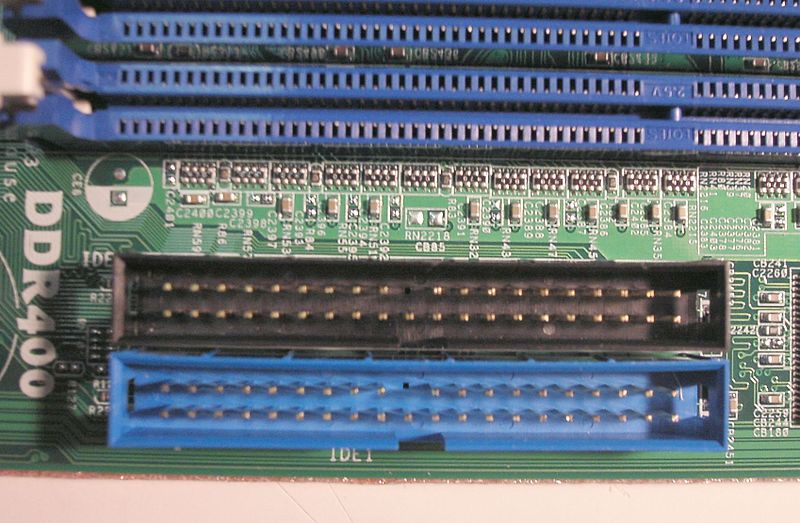I was looking for a new hard driver today and stumbled across something called and ATA, and at first hand I said "Damn that's a good buy but I don't have one of those sockets
so I came to this.
ATA = Advanced Technology Attachment, that's easy enough to figure out
It's a protocol for IDE(= Integrated Device Electronics)Data-transfers
The figures ATA-133 indicate the -theoretical- maximum data transfer of the ATA-protocol.
ATA-33 -> 33 MB/s maximum data-transfer
ATA-66 -> 66 MB/s maximum data-transfer
ATA-100 -> 100 MB/s maximum data-transfer
ATA-133 -> 133 MB/s maximum data-transfer
ATA is also the same as Ultra-ATA (UATA/U-ATA) or UltraDMA (UDMA)
So the ATA/133 hard drive I was looking at will work in my computer... here are some quick pics
Here are the cables

and here are the sockets

Notice on the motherboard it says "IDE" next to the socket
So now I know, and you know too!














